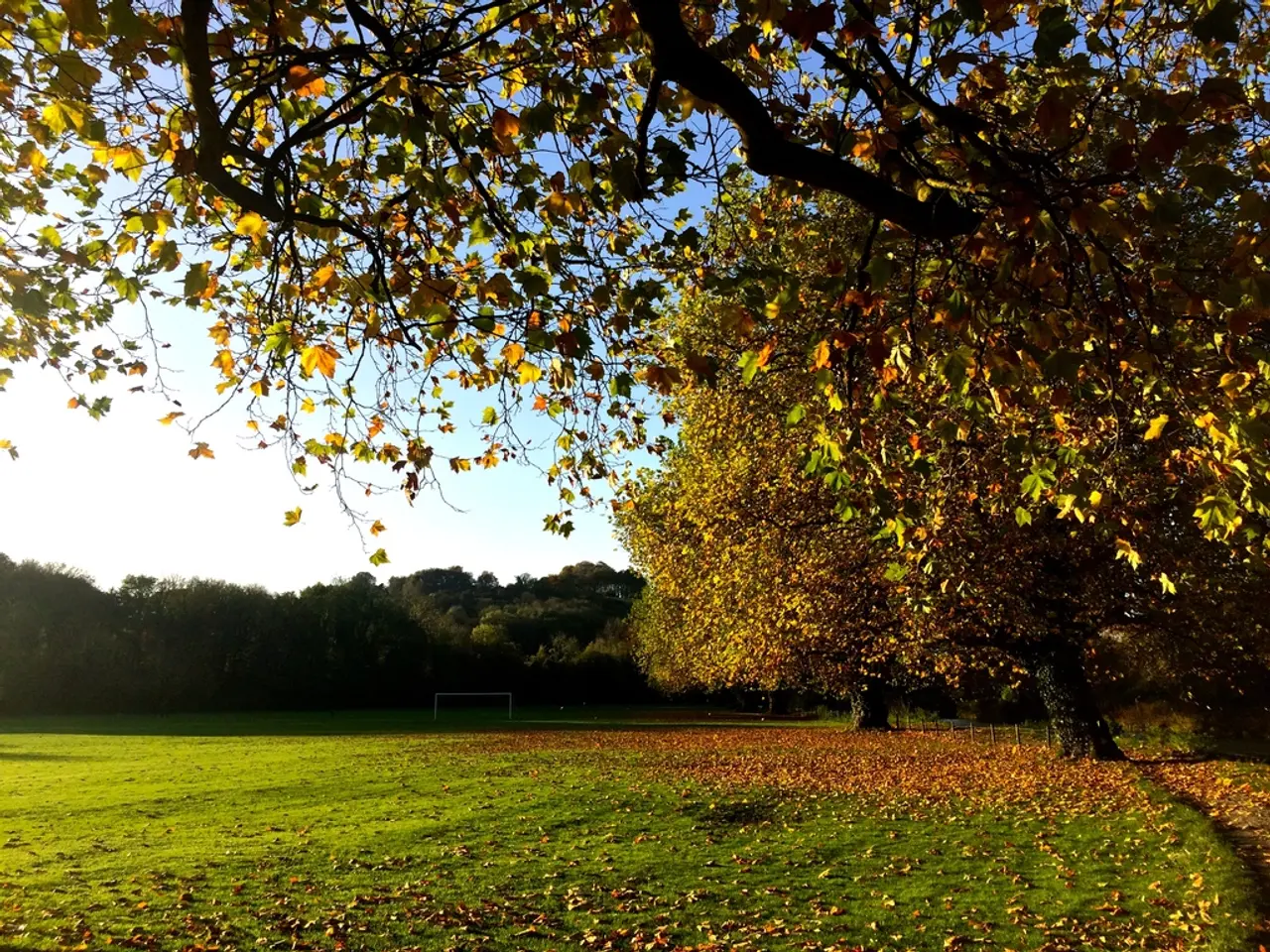Guides for Growing Mahogany Trees: A Method to Generate Sustainable Profit?
In the world of sustainable agriculture, the integration of mahogany and mango farming on the same land is gaining traction. This innovative approach, known as agroforestry, offers a promising solution for achieving sustainable returns and optimising resources.
Mahogany trees, celebrated for their premium hardwood, require well-drained, fertile soil with a pH of approximately 6 to 7, ideally sandy loam or loamy soil. They are native to tropical regions and are known for their robustness, strength, and resistance to pests. Regular pruning helps maintain the tree's health and encourages a straight trunk, which is valuable for timber production. Monitor mahogany trees for common pests such as beetles and scale insects, and apply a balanced fertilizer every 6-12 months to support healthy growth.
Mango trees, on the other hand, thrive in warm temperatures and high humidity. They need full sun for optimal growth and well-drained soil. Before planting mangoes, conduct a soil test to ensure that the site meets the required conditions. Mango trees require sufficient space for canopy expansion and sunlight. Spatial planning should avoid excessive shading of mango by mahogany or vice versa, likely through row planting or alley cropping.
The best practices for integrating these two species involve adopting agroforestry techniques such as intercropping, proper spacing, and water management. Intercropping with compatible crops, such as pulses, vegetables, or spices, generates interim income while trees mature. In India, intercropping with wheat, mustard, or bananas is common. Mango also benefits from intercropping with other crops, enhancing land use efficiency.
Efficient irrigation, such as drip irrigation, is advised, especially in water-scarce areas. Water harvesting structures (e.g., ponds) and groundwater recharge can support irrigation, improving sustainability and resilience to monsoon variability.
Soil and nutrient management is essential for the health of both mahogany and mango trees. Use of organic fertilizers like neem cake can improve soil health, benefiting both trees. Regular monitoring and soil conservation practices are essential to maintain fertility and prevent erosion.
Integrating mahogany and mango farming sustainably involves combining agroforestry principles with appropriate planting patterns, crop choices, water-efficient irrigation, and soil health management to optimise land use and create diversified, stable income over the long term. This approach aligns with successful models of intercropping and agroforestry in India and tropical regions that balance economic and ecological benefits.
Acquiring mahogany seeds or saplings from reputable nurseries or certified suppliers is crucial. To demonstrate commitment to sustainable forestry practices, obtain certification from organizations such as the Forest Stewardship Council (FSC).
In conclusion, the integration of mahogany and mango farming offers a promising solution for sustainable agriculture. By adopting agroforestry techniques, farmers can optimise resources, diversify income streams, and create a more resilient and profitable farming system.
In a sustainable farming setup that integrates both mahogany and mango production, the diverse lifestyle afforded could be considered as part of a home-and-garden approach, given the cultivation of premium hardwood trees alongside fruit-bearing mango trees. The harmonious integration of these two crops on the same land, through methods like intercropping, water management, and soil conservation, not only ensures sustainable returns but also contributes to preserving the environment, making it a blend of home-and-garden and sustainable agriculture.
Enhancing the farmland attractiveness, mango trees' canopy expansion benefits from careful spatial planning to prevent excessive shading between the mahogany and mango trees, a practice often accomplished through row planting or alley cropping. This strategic layout not only optimizes resources but also contributes to the aesthetics and lifestyle appeal of the farmland, thereby intertwining home-and-garden principles with the farming operations.





